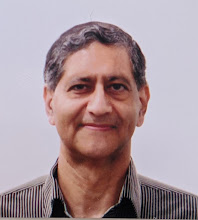Congress labors to find savings of about $900B over 10 years to fund pending health care reforms and covering the uninsured. It has even cut $43B or 13% of Medicare spending on home care, which is arguably a cheap and efficient alternative to far more expensive hospital or nursing home care.
Yet there is almost total silence on the most promising and quick way to exceed the desired savings, while improving care for patients. I'm talking about the trade solution that Prof. Jagdish Bhagwati and I wrote about in the WSJ on May 27, 2008, (with a more detailed version posted on our website.)
Of the four modes (types under GATS) of trade in health care, our annual savings estimate from just the first two is $120B. This consists of $75B from remotely delivered services like tele-medicine, claims processing and customer service (mode 1), and $45B from medical tourism (mode 2). About a fourth of these savings is the government or public share that can be "scored" by the Congressional Budget Office (CBO), given the right trade-friendly steps. This is $30B of annual savings that over a 10 year period covers over a third of the funding required for the health reforms pending consideration in Congress.
Modes 3 and 4 of health care trade can actually realize far higher savings than the first two, though they may be hard to quantify (and hence not adequately count) in the strict CBO methodology.
Mode 3 with hospitals established abroad is of particular interest in the establishment of foreign-run medical facilities in the US. It is also one in which our thinking has evolved in terms of estimated potential savings. We thought foreign establishments could lead to price reductions, mainly by offering competition to the increasingly concentrated medical industry. A Report in February 2006 from the Robert Wood Johnson Foundation has described this trend to concentration since 1990 and has concluded that 90% of the larger metropolitan areas now face concentrated markets.
What we hadn't considered explicitly was the concept and power of reverse innovation in driving down US hospital prices. For instance, US hospitals trapped in the straitjacket of their current mindset and practices have a hard time lowering the package price of their heart bypass surgeries much below $60,000. Yet Dr. Devi Shetty makes a profit in India while charging just $2,000 per procedure. He is setting up a large hospital in the Cayman Islands to serve US patients at low prices. But why not make legislative and regulatory changes to allow such new hospitals in the US itself?
Mode 4 encompasses importing foreign doctors into the US. Even if the seriously flawed US policy responsible for acute doctor shortages is corrected, a big if, it will take more than a decade for the domestic supply to ease the imbalance. While these scarcities are a bonanza for US doctors in terms of inflated salaries and guaranteed over-employment they impose a huge cost on payers and patients. Extending coverage to the uninsured and swelling the ranks of patients exacerbates the crisis.
Allowing highly qualified foreign physicians trained in accredited international institutions to practice in the US after clearing board exams can ease shortages without compromising quality. Given the doctor pay disparities between the US and other such places (including Europe) and the benefit of broadened experience it will be easy to attract the right doctors even with temporary visas or limited US rotations. To ensure that such imported doctors fill the highest need, their visas and their permission to practice can even be made conditional on their working in designated under-served areas.
This easing of doctor scarcities will improve patients' access to health care and quality of care, while also helping rein in excessive salaries that are over twice the European average. While the CBO may refuse to factor all these benefits, one saving that it can quantify are the Medicare cuts of fees to physicians under the Sustainable Growth Rate (SGR). These never take hold in large part (other than lobbying pressures) due to the fear that then an insufficient number of physicians will agree to see Medicare patients.
The imported doctors can be expected to accept the reduced fees or agree to a fixed salary model that is more cost effective, and yet generous in comparison to their earnings in their home country. To make matters even more certain the admittance of these foreign physicians into the US can also be made contingent on their acceptance of such terms and fees as the administration sees fit. As the House bill passed on Nov. 19 shows, the cost of doing away with these cuts is $210B.
In sum the collective benefits and savings of trade in health care dwarfs the measures being considered by Congress now, and debated in the media. These options seem to have so far been studiously ignored or kept off the table, as lawmakers avoid antagonizing industry interests. But the huge social cost of neglecting this potential and a lack of good alternatives makes a strong case for lawmakers rethinking their stance.
Thursday, December 10, 2009
Subscribe to:
Posts (Atom)
